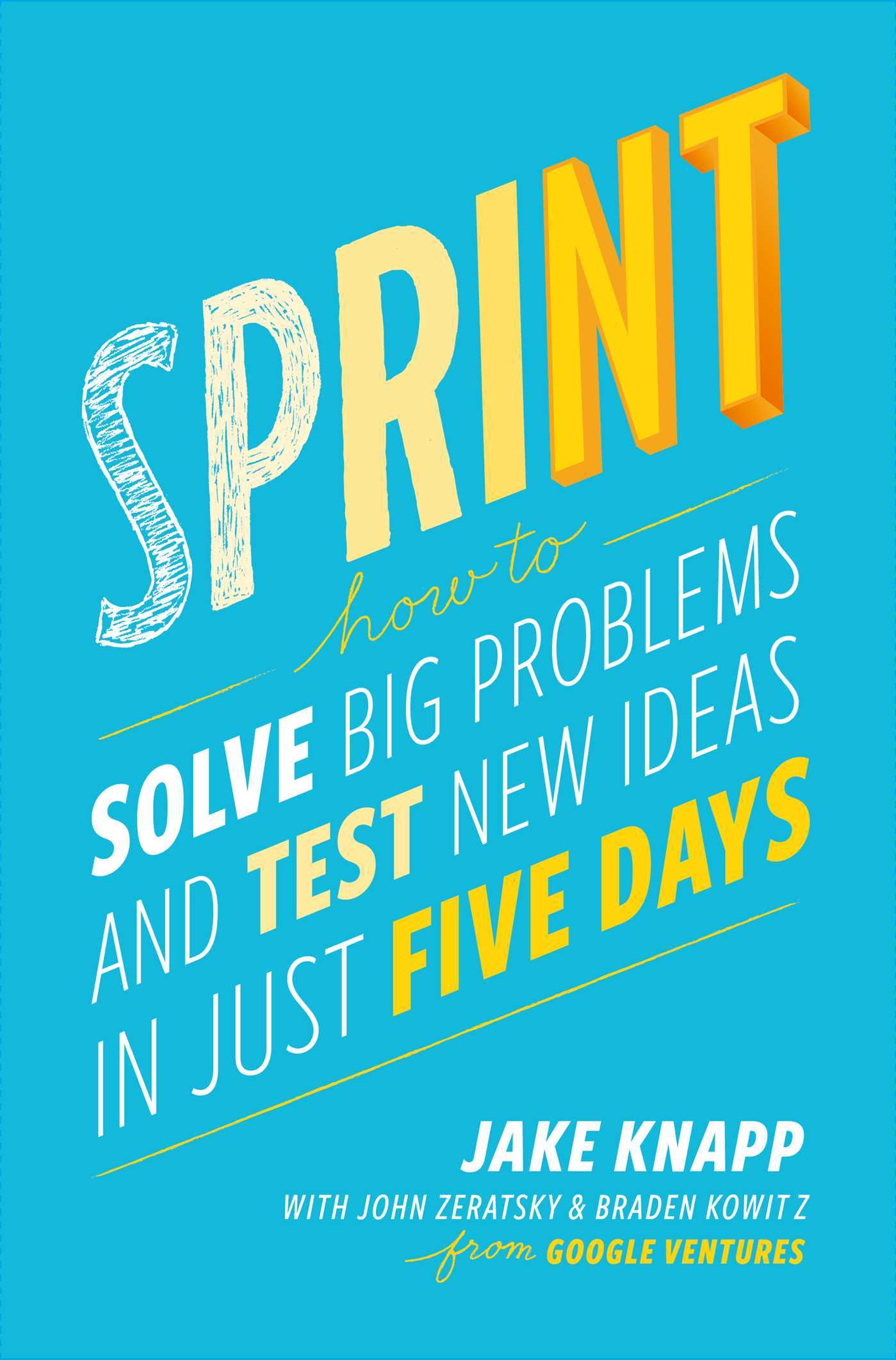At a Glance
Title: Sprint: How to Solve Big Problems and Test New Ideas in Just Five Days
Target Audience: Entrepreneurs, product managers, designers, innovators, and decision-makers in companies
Topic: Problem solving, product development, innovation management

Author: Jake Knapp, John Zeratsky, Braden Kowitz
Language: English
Pages: 288
Price: approx. 13-14 Euros (Kindle and hardcover edition) | approx. 17 Euros (paperback edition)
Pros: Practical guide, effective in work environments, clear process, changes the approach for new projects.
Cons: Can sometimes be repetitive, repackaged well-known design thinking methods
Buy: Amazon
In Detail
“Sprint: How to Solve Big Problems and Test New Ideas in Just Five Days” is much more than a mere guide. It’s a revolutionary method aimed at mastering complex challenges and verifying innovative ideas in just five days. The book presents a detailed plan for each of the sprint’s five days, with each day filled with specific, tried-and-true activities and techniques.
A concrete example from the book relevant for data strategy is the “Map Day“. On this day, an objective is defined and a map of the problem is created. For companies wanting to develop a data strategy, this could mean mapping the data flow within the company, identifying data sources, and recognizing potential data bottlenecks. This visual representation can help set clear objectives for the data strategy and identify areas that need optimization.
Although “Sprint” was not originally developed as a handbook for data strategy, the design sprint approach offers a unique perspective on data strategy. In an era where data is often referred to as the “new oil”, the sprint approach allows companies to quickly test and revise hypotheses about data use and analysis. For instance, a company might hypothesize about the most effective use of customer data to increase revenue. With the design sprint approach, they could test and validate this hypothesis in just a week.
Another example from the book essential for implementing a data strategy is the “Prototyping Day“. Here, companies could create a prototype of their data platform or application and present this prototype to real users the next day. This allows for feedback before making significant investments in development.
The authors, Jake Knapp, John Zeratsky, and Braden Kowitz, not only bring in their theoretical knowledge but also their practical experiences. Knapp, the pioneer of the design sprint process, introduced this approach at Google Ventures. Zeratsky and Kowitz, both with an impressive tenure at Google Ventures, have leveraged their expertise to conduct numerous sprints across various industries.
It’s noteworthy that “Sprint” heavily builds on the fundamental principles of Design Thinking. While it leverages many of the core principles of Design Thinking, it also brings the “Google touch”, adding credibility and relevance to the approach. Some critics might argue that the book is merely a rebranding of tried-and-true Design Thinking methods; however, through the integration of experiences from Google, it offers an evolution in a specific, practical format.
In conclusion, “Sprint: How to Solve Big Problems and Test New Ideas in Just Five Days” is not just an inspiring read but also a practical tool. It provides a clear, step-by-step guide that’s easy to follow and is filled with inspiring real-world examples. For data experts looking for new approaches to develop and refine their data strategy, this book is an indispensable tool.
This text was created with the help of ChatGPT.

